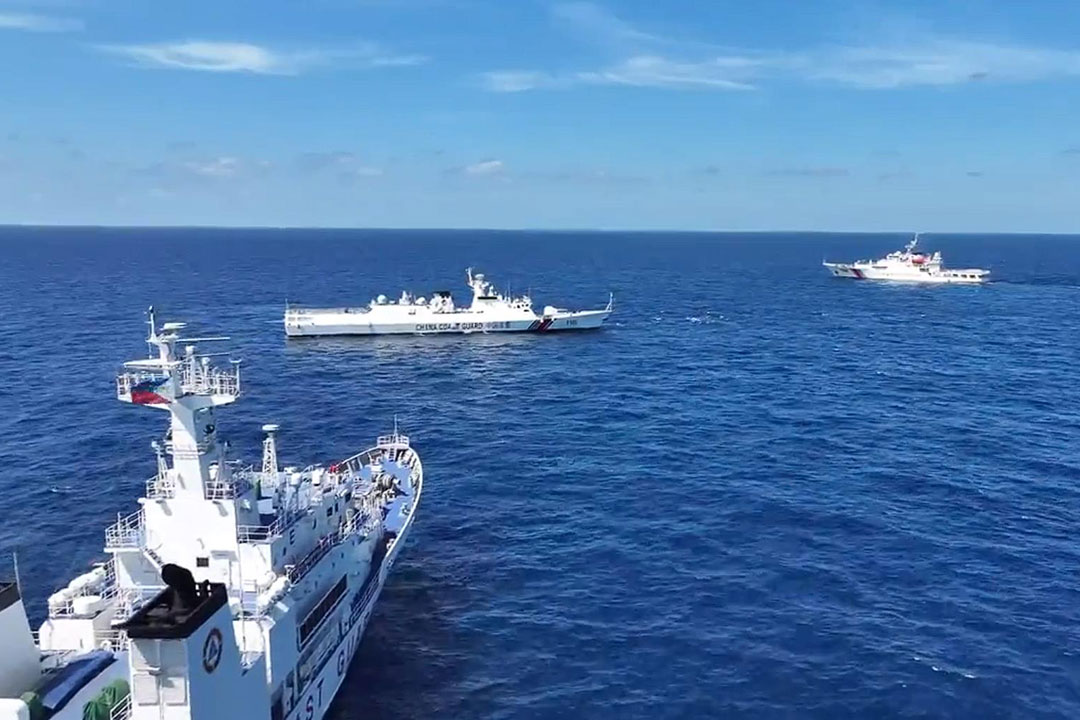In a tense maritime encounter, the Chinese Coast Guard closely monitored and shadowed the Philippine research vessel BRP H Ventura and the Philippine Coast Guard’s BRP Gabriela Silang as they navigated towards Bajo de Masinloc, also known as Scarborough or Panatag Shoal.
Ray Powell, a former US Air Force official and ex-Defense Attaché, reported the incident on his social media platform X, underscoring escalating tensions in the disputed waters of the South China Sea.
Powell’s report revealed that the Philippine vessels were subjected to a significant delay approximately 35 nautical miles from Luzon’s coastline, near China’s contentious nine-dash line. Chinese Coast Guard vessel 5303 obstructed the path of the Philippine ships, bringing their progress to a grinding halt for about eight hours, a delay that could have serious implications in such a tense situation.
“The Philippines’ BRP H Ventura & its escort BRP Gabriella Silang have barely moved this past 8 hours,” Powell disclosed on X.
While the reason for the prolonged pause remains unclear, the Philippine vessels eventually resumed their journey towards Bajo de Masinloc at 10 a.m., with Chinese Coast Guard vessels closely tailing them.
Powell noted a significant increase in Chinese vessels near Scarborough Shoal in the last 48 hours, speculating a connection to the Philippines’ upcoming hydrographic survey announcement aimed at mapping underwater terrain features.
“China has previously engaged in dangerous cable-cutting maneuvers when it wants to stop such surveys within its claimed waters,” Powell cautioned.
The mission of BRP H Ventura to conduct a hydrographic survey north of Scarborough Shoal, accompanied by BRP Gabriela Silang, is not just a routine operation. It carries significant strategic implications for maritime navigation and resource management in the region, potentially altering the balance of power and territorial claims in the South China Sea.
The incident highlights the precarious balance of power in the South China Sea and the challenges nations face asserting their territorial claims amidst China’s expansive maritime ambitions. As tensions persist, close monitoring of regional developments becomes imperative for regional stability and security.






